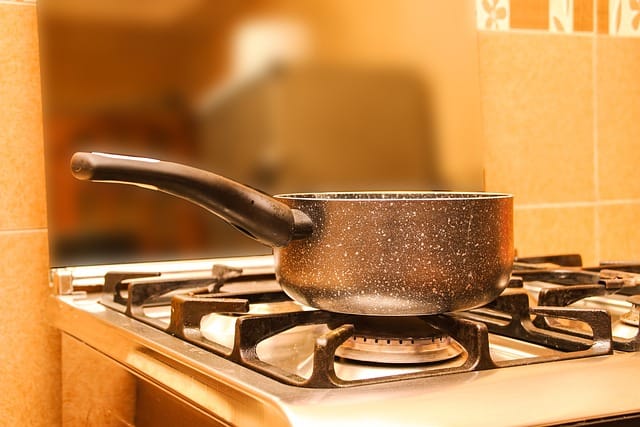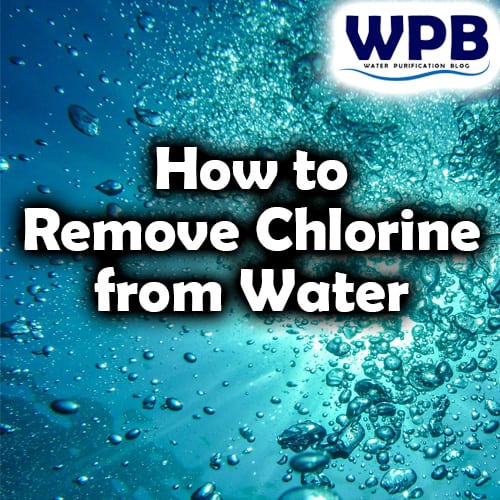Introduction
Water is a vital resource, and knowing how to remove chlorine from water is crucial for maintaining good health.
Many municipal tap water supplies contain chlorine, which is used as a disinfectant.
While chlorine helps eliminate harmful bacteria and microorganisms, chlorinated water can also have adverse effects on our health and the taste of drinking water.
If you’re wondering how to remove chlorine from chlorinated water, this is the right place.
In this guide, we’ll explore various methods and techniques to ensure your drinking water is free from any chlorine levels, allowing you to enjoy its benefits without any concerns.
Table of Contents
How to Remove Chlorine from Drinking Water: A Step-by-Step Guide
1. Activated Carbon Filters
Activated carbon filters are the easiest and highly effective water to filters remove chlorine from water.
They work by adsorbing the free chlorine molecules onto the surface of the carbon. Here’s how to use activated carbon filters:
Purchase an activated carbon filter suitable for your faucet or water pitcher.
Install the filter according to the manufacturer’s instructions.
Allow water to pass through the filter, and the activated carbon will remove chlorine as it flows.
Replace the filter cartridge as per the recommended schedule to ensure optimum performance.
2. Reverse osmosis systems
Reverse osmosis systems will completely remove chlorine and other contaminants from tap water and provide high-quality drinking water.
3. The Boiling Method
Boiling water is one of the simplest and oldest methods for removing chlorine. Here’s how to do it:
Fill a pot with tap water.
Place the pot on the stove and bring the water to a rolling boil.
Allow the water to boil for approximately 15 minutes.
Turn off the heat and let the water cool down.
Once cooled, the chlorine will have evaporated, leaving you with chlorine-free water.

4. Use a Chlorine Neutralizer
If you’re looking for a quick and convenient solution, chlorine neutralizers are readily available in the market. These products work by chemically neutralizing chlorine. Here’s how to use them:
Follow the instructions provided on the chlorine neutralizer product.
Generally, you’ll need to add a specific amount of the neutralizer to a certain volume of water.
Stir the water thoroughly to ensure the neutralizer is evenly distributed.
Wait for the recommended contact time specified on the product.
After the contact time has elapsed, your water will be free from chlorine.
5. Dechlorination Tablets
Dechlorination tablets are another convenient option for removing chlorine from water.
They contain chemicals that neutralize chlorine effectively. Here’s how to use dechlorination tablets:
Read and follow the instructions provided on the dechlorination tablet packaging.
Drop the recommended number of tablets into a specified volume of water.
Allow the tablets to dissolve completely.
Once dissolved, the tablets will neutralize chlorine, making the water safe to drink.
FAQs about Removing Chlorine from Water
1. Can boiling water remove chlorine?
Yes, boiling water can remove chlorine. When you boil water, the heat causes the chlorine to evaporate, leaving the drinking water chlorine-free.
2. Is it safe to drink water with chlorine?
While chlorine is used to disinfect water and make it safe to drink, consuming high levels of chlorine can have adverse health effects. It is best to remove chlorine from drinking water to avoid any potential risks.
3. How long does it take for chlorine to dissipate from water?
The time it takes for chlorine to dissipate from water depends on various factors such as temperature and surface area exposed. Boiling water for about 15 minutes usually removes chlorine effectively.
However, using other methods like activated carbon, water filters, or chlorine neutralizers can provide immediate results.
4. Can I use chlorine-free water for plants?
Yes, chlorine-free water is beneficial for plants, as chlorine can be harmful to their growth. Using water that has had chlorine removed during water treatment ensures healthier and thriving plants.
5. Are there any natural methods to remove chlorine from water?
Yes, there are natural methods to remove chlorine from water. One option is to let the water sit exposed to the air for several hours, as chlorine will gradually dissipate.
Another natural method is to use vitamin C (ascorbic acid) tablets, which neutralize chlorine when added to water.
6. Can I use bottled water to avoid chlorine?
Bottled water is generally free from chlorine since it undergoes a water filtration and process before being packaged.
However, it is essential to check the label to ensure that the water does not contain chlorine or any other additives.
7. Can you remove chlorine with a water softener?
If you are wondering does a water softener remove chlorine, the short answer is no. Find out why and how to remove it in our other post: Does a water softener remove chlorine?
Conclusion
Having access to clean and chlorine-free drinking water is vital for our health and well-being. Whether you prefer the simplicity of boiling water or the convenience of using chlorine neutralizers or activated carbon filters, there are numerous effective methods to remove chlorine from your water. By following the step-by-step guide provided in this article, you can ensure that you and your family have access to safe and pure drinking water.
Remember, it’s crucial to choose a method that suits your needs and preferences. Whether you opt for quick solutions like chlorine neutralizers or invest in long-term options like UV sterilizers, the goal remains the same: to enjoy clean, chlorine-free water that nourishes and hydrates you without any harmful effects.
So, why wait? Start implementing these methods today and say goodbye to too much chlorine in your water. Enjoy the refreshing taste and the peace of mind that comes with knowing you’re taking care of your health and well-being.

